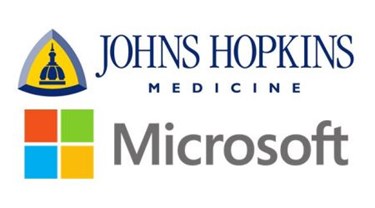Microsoft, Johns Hopkins Team To Make ICU Devices Communicate

Microsoft has joined Johns Hopkins University in an effort to make intensive care unit (ICU) technology more streamlined and cooperative. By improving interoperability and analyzing data from different monitoring devices — through implementation of an IT solution for ICU caregivers and their patients — the organizations aim to reduce the risk of life-threatening complications and injuries.
In 2012, the Johns Hopkins Medicine Armstrong Institute for Patient Safety and Quality, in collaboration with the university’s top scientific minds, launched Project Emerge. The initiative is intended to combat “information overload” in the ICU and to deploy an integrated set of interventions that will reduce clinician error.
“Despite heroic efforts by clinicians, patients continue to suffer preventable harm, in large part because healthcare is grossly under-engineered. Devices don’t talk to each other, treatments are not specified and ensured, and outcomes are largely assumed rather than measured,” said Peter Pronovost, director of the Armstrong Institute, to the Gazette.
Pronovost added that newer and more sophisticated technology has gone a long way toward reducing hospital-related morbidity, but newer technology also presents a unique set of challenges that his team of systems engineers will attempt to address.
Now, Johns Hopkins has teamed up with tech giant Microsoft to design a system that would collect information from different monitoring devices, designed by different manufacturers, and provide critical analytics that can alert clinicians to dangerous trends in a patient’s vital signs, such as the development of pneumonia or blood clots. Microsoft will leverage its advanced technology, including the Azure cloud platform, with Johns Hopkins’ clinical expertise and research.
According to Pronovost, a typical patient ICU room contains anywhere from 50 to 100 pieces of medical equipment, manufactured by various companies. “We are excited to collaborate with Microsoft to bring interoperability to these medical devices, to fully realize the benefits of technology and provide better care to our patients and their families,” he said in a recent press release.
Michael Robinson, VP of U.S. health and life sciences at Microsoft, said that the two organizations share a “common vision,” and he anticipates that their collaboration will “empower health professionals with easy-to-consume, data-driven insights, allowing them to focus more on patients and less on technology and process.”
Pronovost recently spoke at the U.S. News Hospital of Tomorrow Conference, where he remarked that “clumsy and clunky” machinery that does not communicate efficiently within a system is a huge source of preventable harm.
“Health care is the only industry that invests heavily in technology but gets negative productivity,” he said, according to US News and World Report. “In every other industry, the users [not vendors] say what they need.”
Johns Hopkins estimated that four million patients are admitted to the ICU each year, and as many as 400,000 die from potentially preventable complications.
